Palm WebOS, Pre and Pixi – Where Are We Now?
by Joseph Berthiaume on March 23, 2010 12:00 AM EST- Posted in
- Smartphones
- Mobile
Pre evolves
The Pre’s biggest shortcoming is in the build quality of the hardware and this is the spot where the iPhone noticeably trounces it. The iPhone just feels indestructible, which is pretty amazing for a device with such a huge screen. It is Pre’s slider design that hurts it the most. The plastic-on-plastic mechanism just isn’t all too smooth and that little bit of grinding sound is enough to make the phone feel a little cheap. You never get that impression with the iPhone or any Blackberry. It may be the nature of the beast when it comes to the hardware from a design standpoint. To keep the device to a reasonable size, yet maintain the size of the LCD, Palm had to hide the keyboard as they did. Of course they could have chosen a smaller screen, and leave the keyboard always exposed – which brings us to Palm’s second WebOS device – Pixi.
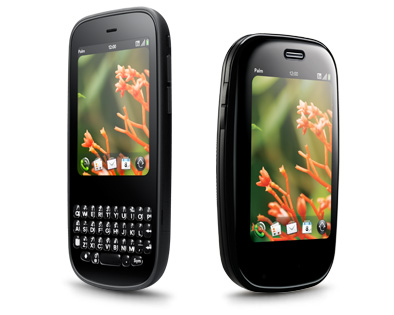
When it was first released in November 2009, it seemed as if the Pixi was being steered into the lower-end smartphone market, perhaps as a ‘starter smartphone,’ to those coming from what’s become known as a ‘feature phone’. Pixi’s price certainly confirmed that, at 99$ to start, and it’s even cheaper now, if not free (with a contract, of course). What’s interesting, though, if looked at from a bit of a higher level, is that Pixi actually exceeds its ‘big brother’ Pre in some areas, despite its diminutive stature.
Pixi – Small, Solid and Still Smart
It’s easy to say that the name “Pixi” doesn’t exactly conjure up images of a tough, fully-featured mobile device that’s meant to centralize your on-the-go experience. Truth be told, the name “Pixi” does sound a little…wimpy. While there is some truth to that perception as we’ll see later, there are some interesting things going on here.
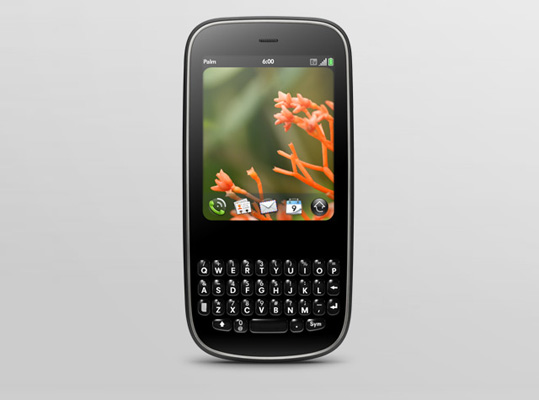
As you can see, Palm chose a radically different form factor from its first WebOS device. With Pixi, Palm has brought back memories of the Treos and Centros of years past. In eschewing the slider mechanism of the Pre, Palm has eliminated what was, without a doubt, Pre’s biggest shortcoming. Gone is the grinding plastic-on-plastic mechanics used to expose the keyboard. Oreo-twist effect? Forget it. There are no physical bits here to ruin the experience or distract from the excellence that is WebOS, just a monolithic chunk of plastic that feels very, well, iPhone like. It’s solid-feeling, as if you could drop it and it wouldn’t shatter into 300 pieces (which is exactly the feeling you get when holding the Pre).
Now, in order to get to this more appealing (to some) design, Palm had to make some interesting and likely very difficult, choices. Not wanting to give up on the hardware keyboard (which seems to be their thing), Palm chose to make it an always-exposed type. Think Treo, Centro, or Blackberry. In order to fit that in, they had to make the difficult decision of altering what was one of Pre’s strong points – the screen. While the Pixi’s screen doesn’t lose too much of the splendor that was the Pre’s, it does lose significant size and some resolution:
| Overall Size | Screen Size | Screen Resolution | |
| Apple iPhone 3GS | 4.5" x 2.4" x 0.48" - 4.8oz | 3.5" | 480 x 320 |
| Palm Pre | 3.9" x 2.3" x 0.67" - 4.76oz | 3.1" | 480 x 320 |
| Palm Pixi | 4.37" x 2.17" x 0.43" - 3.2oz | 2.6" | 400 x 320 |
Palm also seems to have found some cost savings with the Pixi backlight. It’s not dim by any stretch, but if compared with the Pre (which might not be fair), it’s not as bright. This is probably more of a compliment to Pre’s screen than anything else, but needs mentioning if you are coming from the Pre. That all being send, Pixi’s screen is still outstanding – one of the best around.
Brief side track - this brings up an interesting question: what’s the most desirable form factor here? The answer is… there may not be an answer. If you ask Apple, a hardware keyboard is oh-so-1990’s. Palm seems to be in the same camp as RIM in that hardware keyboards are the way to go. Android seems to be leaning towards software side of things and the newly announced Windows Phone 7 will support both paradigms. There are those who believe that the industry as a whole is moving towards devices with big screens and software keyboards. The one-device-to-rule-them-all camp is in that group when you consider that these phones are also fully featured media players that can store video, access YouTube etc. On the other hand, who can argue with the millions of corporate Blackberry carriers who depend on their hardware keyboard to rip off dozens of emails per day? Perhaps this is another area where there is room for more than one, or even several, form factors and designs.
Beyond the changes to the screen, it’s obvious that the Pixi was designed with the Pre’s shortcomings in mind. Palm clearly learned something from the Pre and how it was received. For example, the default back panel of the Pixi is textured like the Pre’s Touchstone back (though the default Pixi panel is not a Touchstone panel – that costs extra - *mutter*). Also, regarding the Touchstone – the Pixi sticks to it much stronger than the Pre. It might not sound like much, but if you’ve ever tossed the Pre on the Touchstone and had it slide off and not charge for a whole night (as I have, more than once) you’ll appreciate this. The microUSB port door on the Pixi isn’t a nightmare as on the Pre. You actually don’t need a micro-crowbar to get it open.
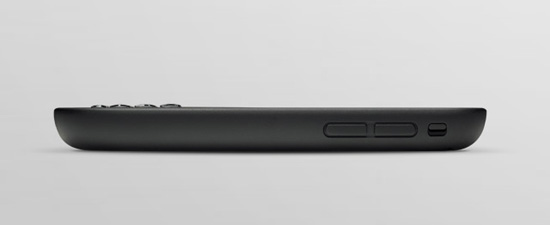
Pixi also moves a few buttons around slightly. The power switch is on the opposite corner from the Pre’s and the volume buttons have moved from left to right. Palm’s famous silencer switch has a different form and a slightly different position. It also feels a little more solid, which if you’ve read this far, you will recognize as a theme.
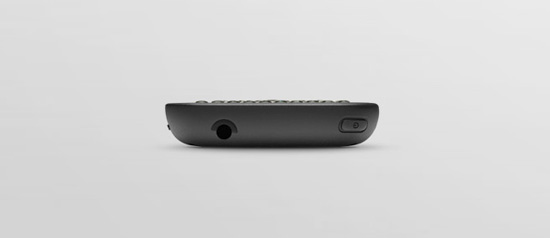
The other big change - on the Pre, the “gesture area” is broken up by a raised, hardware button meant to minimize all the active windows to cards and take you to the desktop. While this button is useful in that respect, it’s by no means required. That same action can be completed by simply swiping up from the gesture area.
The real problem with the center button though is that it’s right smack in the middle of the gesture area. This is an issue given that the gesture area is for…gestures. The button is a speed bump in the middle of the area in which you’re supposed to be performing swipes to accomplish things. Yes, you can swipe left to right on either side of the button, or slightly above it (if you’re precise), but that lessens the effect of the whole gesture interface.
Fortunately, this is another of those things that Palm did right in changing with the Pixi. While the button is still there, it’s a touch-sensitive area under the plastic of the gesture area. There’s no bump, or physical area to foul up your gesture-ing.
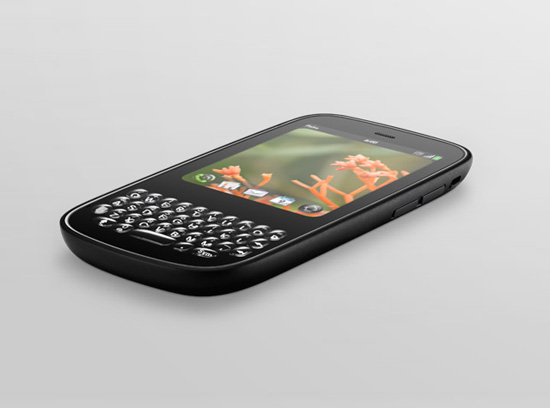
Oh and Palm has further adopted this change in its latest devices which have recently come to the Verizon network. Both the Pre Plus and the Pixi Plus feature that smooth, non raised center button.










45 Comments
View All Comments
Johnmcl7 - Wednesday, March 24, 2010 - link
There's no 'apologist' aspect about it at all - regardless of what you think of Nokia, their platform has considerable merit particularly in the scope of this article. S60 had a simple, efficient multitasking long before the Pre did and the N900 currently has a better system than the Palm Pre uses. In addition the N900 has full flash support well in advance of any other smartphone.These are just simple technical facts which there's no disputing yet as per usual, AT reference most of the current smartphone platforms and entirely ignore Nokia.
Taft12 - Wednesday, March 24, 2010 - link
That's nice that it had flash and multitasking a long time ago. What have you done for me lately, Nokia?Johnmcl7 - Wednesday, March 24, 2010 - link
It's not 'nice', it's something that was blatantly overlooked in the article - AT were quick to bash S60 but now Nokia have produced a newer OS that addresses their criticisms and surpasses many other smartphones it doesn't even get a mention despite praising phones such as the Palms for having an inferior implementation.djc208 - Tuesday, March 23, 2010 - link
I want Palm to do well I really like the Web OS, but these exclusive contracts are doing more to hurt them than help. Even now, sure the Pre+ is on Verizon, but it becomes difficult to want to buy a Sprint Pre (with the much cheaper Everything plans) when you know you're not getting as much phone as the Verizon guys are.I was so ready to go to a Pre when they came out on Sprint. I'd still consider it except that I'm still stuck with not being allowed to have a camera phone at work, which means all but one or two Blackberries are off limits if I want to take it to work, which is where I spend the most time out of the house. And honestly I don't need a smart phone bad enough to want to pay for a BB and the service to go with it. The Pre was cool enough to justify it, the BB is not IMO.
I know I can remove the camera but buying a device and then voiding the waranty by purposely breaking it just seems stupid. Sure, us camera restricted people are a small portion of the market, but it's really frustrating to watch all this cool tech come down the pipe and outside BB be completely ignored by every other cell phone maker on the market.
Well, have fun in smartphone land, I'll probably have my little old Sanyo for the rest of my life now.
Sherlock - Tuesday, March 23, 2010 - link
2 mins 40 secs to boot....windows boots a lot quicker than that.neogodless - Tuesday, March 23, 2010 - link
[quote]Of course when we’re talking about performance, the Pre still has a leg up on the Pixi, and the Pixi Plus has the same leg up on its non-plussed predecessor, in that the original Pixi still lacks WiFi.[/quote][quote]If you are going to be viewing a lot of media and browsing the web, you probably want the extra real estate the Pre’s screen provides, as well as the WiFi (assuming you’re on Sprint, if you’re on Verizon it’s moot, so congrats). If you’re used to having a phone that feels more indestructible, you’re going to prefer the Pixi. I’ve been using both phones for a few months and it’s a very hard decision for me. Most of the time I say Pre – it’s just a little more powerful with its WiFi and larger screen.[/quote]
I swear you just updated it because earlier I was very confused as to whether the Pixi Plus had WiFi or not. You seem to omit the fact that it does in several places! Anyway, this does seem to clear it up for me. Thanks!
neogodless - Tuesday, March 23, 2010 - link
Well, the Quote button doesn't work... but neither does doing it by hand. Neat!MonkeyPaw - Tuesday, March 23, 2010 - link
Yeah I'd love to see the comment section fixed (at least to kill the spammers). I'm also pining for a mobile friendly version on the site-- it's just a little tough on the eyes on my iTouch. Just friendly requests, Mr Anand. :)Anand Lal Shimpi - Tuesday, March 23, 2010 - link
The comments section will be much improved with the new site :)We can talk about Mobile AT after the new site launch :)
Take care,
Anand
MonkeyPaw - Wednesday, March 24, 2010 - link
Music to my ears! I love your content over the other sites I visit. It's gotta say something when your readers are willing to squint through your articles. ;)